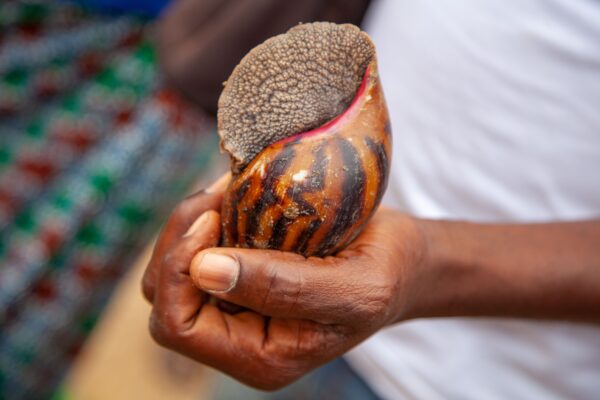Watch our new video to find out how we're working with retailers and producers to make charcoal more responsible
Charcoal comes from trees, so when you buy a bag of charcoal you have bought a small piece of forest. The question is, where has that charcoal come from? And has it been produced at the expense of the people making it and the environment it was made in?
Between four and 12 tonnes of dry wood are needed to make a single tonne of wood-based charcoal. Charcoal production in tropical countries is sometimes linked to illegal logging, forest degradation and the clearing of High Conservation Value forests. To put that into further perspective, it is reported that more than 90% of charcoal is produced in tropical areas. Charcoal production also has links to poor working conditions and poor worker rights.
Since starting work in charcoal in 2013 we have raised awareness about the environmental and social impact of untraceable charcoal. This led to the development of a methodology that identifies where charcoal comes from. We are using it in our work with several retailers and many producers to transform the charcoal industry for the better.
Identifying the origins of charcoal
Charcoal might all look the same, but there are subtle differences which allow us to distinguish its origin. In 2014 we developed a methodology which identifies the origin of charcoal sold in European supermarkets. This has allowed us to tell the difference between charcoal produced in a temperate European climate and that from tropical regions.
Find out more about our charcoal analysis methodology in our film below.
Working retailers to transform the industry
In 2015 we used this approach to discover the origins of charcoal sold in French supermarkets. The results were surprising. 52% of bags did not specify origin – they contained tropical charcoal coming from unspecified places, and therefore could have been produced at the expense of forests and workers.
We shared the results with the supermarkets. Now they could find out what wood was in their charcoal bags, they wanted to help transform the industry for the better. This led to them changing the way they bought their charcoal, with supermarkets asking their suppliers to demonstrate their charcoal came from a responsible source. Many of these retailers created new traceability policy requirements for the charcoal they buy. This helped begin a change in the European charcoal industry that we are supporting retailers to drive.
Taking the approach to other countries
We then took our approach to other countries. Firstly, Germany – the biggest charcoal market in Europe, which faces the same problems with a lack of transparency. In 2016, our tests found more than half the bags we analysed contained tropical wood, with nearly 90% of bags not declaring the origin of wood. We have just finished the same analysis on the UK market, and we will share the results later this year. We now conduct annual analysis of UK, French and German bags.
Sharing the results to the main buyers helps raise awareness and creates a need for further sources of responsible charcoal. And although charcoal is not yet included within the European Union Timber regulation, the charcoal industry itself is moving towards a more responsible supply.
Supporting producers to change
Now French retailers know more about charcoal they ask their producer suppliers to start demonstrating that their charcoal is not linked to deforestation and exploitation. We also support charcoal producers to adopt better practices, too. On such field visits we use four criteria to assess if charcoal is being produced responsibly. They are:
- Wood comes from legal sources and does not cause deforestation
- Transparency on the full supply chain, from the production plant to the bags in the shop
- The production plant has a strong traceability system to track its charcoal back to wood source
- Health and safety of workers is respected
Another key aspect of our field visits is to check that charcoal sold from the plant is produced there. Between 2014 and 2017 we joined our members on more than 100 field visits in more than 10 countries. From these visits we share recommendations for improvements with both the member and factory. The experiences helped form our charcoal control system and contribute to sector transformation.
In 2016 we joined our member La Forestiére Nord for their fifth supplier visit in the Baltics in order to explain our field approach. Find out more in our video below.
Charcoal in the future
We are developing an online platform to share transparency between actors in the sector and also communicate the product story to the end consumer. This tool should also help to promote charcoal alternatives, reforestation and sustainable energy sources in developing countries.
We are looking to expand the verification of responsible charcoal sources not only to the BBQ market but also to ferrosilicon and silicon-metal industry (components used in a variety of products from solar panels to cars, often made using charcoal as a carbon raw material in the early stage of production). World-wide, we estimate that three to four million tons of charcoal is used per year for this application. This number is likely to increase.
We also aim to work in Brazil, the biggest charcoal producer in the world, with seven million tons (14% of worldwide production). In Brazil, charcoal is used as a raw material to produce steel. Half of the charcoal comes from natural forests and the other half from plantations. We look forward to reporting on the further work we do in charcoal.


